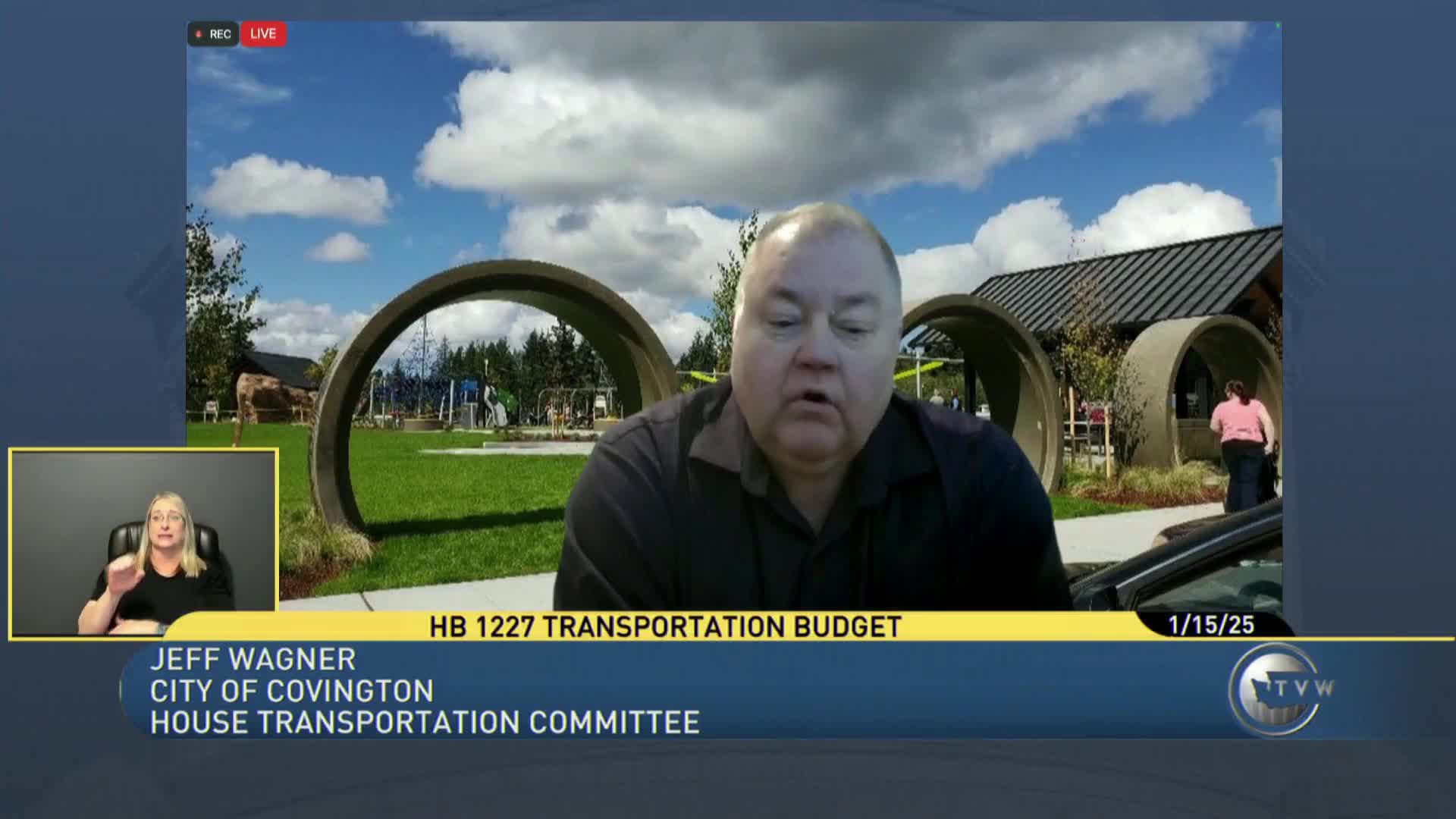South King County coalition demands safety upgrades for Highway 18 amid rising fatalities
January 15, 2025 | Transportation, House of Representatives, Legislative Sessions, Washington
This article was created by AI summarizing key points discussed. AI makes mistakes, so for full details and context, please refer to the video of the full meeting. Please report any errors so we can fix them. Report an error »

In a recent meeting of the House Transportation Committee, key stakeholders from South King County gathered to advocate for critical safety improvements along State Route Highway 18. This highway serves as a vital link between Interstate 90 and Interstate 5, facilitating freight movement between the Port of Tacoma and areas east of the Cascades. As regional growth continues, concerns have escalated regarding the highway's ability to accommodate increasing traffic demands safely.
Local representatives emphasized the importance of maintaining the $640 million allocated for safety enhancements from Deep Creek to Tiger Mountain Summit. They warned that any delays in funding could have dire consequences for community safety and mobility. Improved infrastructure is seen as essential for residents in nearby communities, such as Covington, to access work, schools, healthcare, and other essential services without undue risk.
Eastside Fire and Rescue's Assistant Chief Will Aho highlighted alarming statistics, noting a 600% increase in fatalities and a 120% rise in overall incidents along the highway over the past five years. Aho urged lawmakers to prioritize the project, stressing the dangers faced by first responders in the area, which is characterized by narrow lanes and poor visibility.
In addition to the Highway 18 discussions, representatives from the Northwest Seaport Alliance called for continued investment in critical freight infrastructure, including the Puget Sound Gateway and the Interstate 5 Port of Tacoma Road interchange. They also advocated for the electrification of port operations and support for zero-emission vehicle incentives as part of the state's commitment to decarbonization.
Conversely, Dr. Breck Lebeg from the Washington Physicians for Social Responsibility raised concerns about the health impacts of expanding highway infrastructure. He argued that new highway construction could exacerbate environmental issues and public health crises, advocating instead for investments in rail infrastructure to reduce vehicle miles traveled.
The meeting underscored a complex interplay of interests, balancing the urgent need for transportation safety improvements with broader environmental and health considerations. As the committee moves forward, the discussions will likely shape the future of transportation funding and infrastructure development in Washington State. Stakeholders await the committee's decisions, which will have lasting implications for both community safety and environmental sustainability.
Local representatives emphasized the importance of maintaining the $640 million allocated for safety enhancements from Deep Creek to Tiger Mountain Summit. They warned that any delays in funding could have dire consequences for community safety and mobility. Improved infrastructure is seen as essential for residents in nearby communities, such as Covington, to access work, schools, healthcare, and other essential services without undue risk.
Eastside Fire and Rescue's Assistant Chief Will Aho highlighted alarming statistics, noting a 600% increase in fatalities and a 120% rise in overall incidents along the highway over the past five years. Aho urged lawmakers to prioritize the project, stressing the dangers faced by first responders in the area, which is characterized by narrow lanes and poor visibility.
In addition to the Highway 18 discussions, representatives from the Northwest Seaport Alliance called for continued investment in critical freight infrastructure, including the Puget Sound Gateway and the Interstate 5 Port of Tacoma Road interchange. They also advocated for the electrification of port operations and support for zero-emission vehicle incentives as part of the state's commitment to decarbonization.
Conversely, Dr. Breck Lebeg from the Washington Physicians for Social Responsibility raised concerns about the health impacts of expanding highway infrastructure. He argued that new highway construction could exacerbate environmental issues and public health crises, advocating instead for investments in rail infrastructure to reduce vehicle miles traveled.
The meeting underscored a complex interplay of interests, balancing the urgent need for transportation safety improvements with broader environmental and health considerations. As the committee moves forward, the discussions will likely shape the future of transportation funding and infrastructure development in Washington State. Stakeholders await the committee's decisions, which will have lasting implications for both community safety and environmental sustainability.
View full meeting
This article is based on a recent meeting—watch the full video and explore the complete transcript for deeper insights into the discussion.
View full meeting
